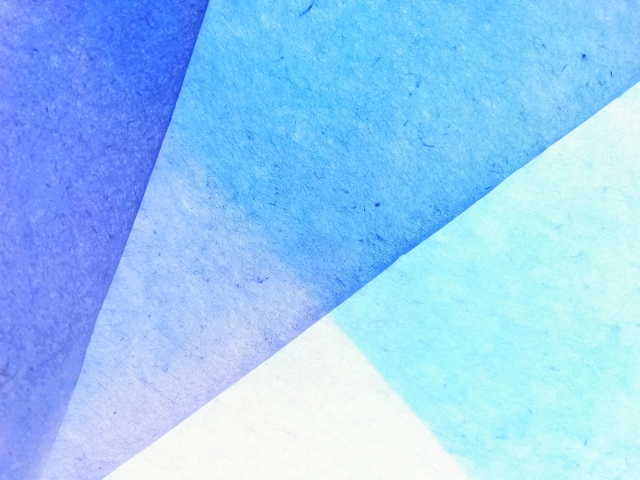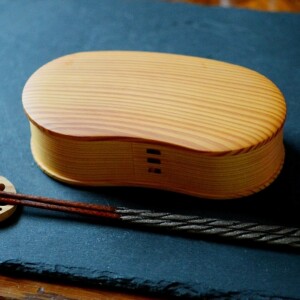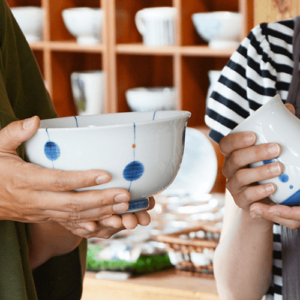
What are the raw materials used for washi? The three main raw materials used for washi and their characteristics
Have you ever wondered what kind of raw materials are used when you touch Japanese paper?
Three kinds of raw materials have been used for washi since ancient times, and each has various characteristics. However, nowadays, plants can be used to make washi paper even if they are not suitable, so there is no longer a need to use expensive raw materials.
Nevertheless, raw materials that have been used for a long time are still used because they are very popular.
Let us explain the characteristics of raw materials used for washi.
Characteristics of raw materials used for Washi since ancient times

The raw materials of washi used since ancient times are as follows.
- Kozo (paper mulberry)
- Mitsumata (mitsumata)
- Gampi
These three raw materials have a number of things in common: the fibers are long and strong, the fibers easily intertwine with each other due to their stickiness, making them stronger, more fibers can be obtained at one time, making it easier to make washi, and the finished washi is beautiful and easy to use.
Now, let us explain the characteristics of the raw materials used for washi since ancient times.
0 Kozo (paper mulberry)
Kozo is a deciduous shrub of the mulberry family, and its greatest feature is that it is so easy to cultivate that it can be harvested every year.
Its thick, long fibers are extremely tough and are used in a wide range of applications. Depending on the method of production, a little of the sweet bark between the black skin on the surface and the fibers can be left behind and strained together with the fibers to make water-resistant, strong washi paper.
0 mitsumata
Mitsumata was first used as a raw material for washi more than 400 to 500 years ago, and became an important papermaking material when it was first used by the Printing Bureau during the Meiji period.
Mitsumata is basically a thin, flexible, and shiny fiber, and washi made from mitsumata has an extremely smooth surface that gives it an elegant and delicate appearance.
It is also used for arts and crafts paper and calligraphy paper, and is so well suited as printing paper that it is even used for Bank of Japan notes, which are the highest quality paper in the world.
0 gampi
Gampi is the only plant among the raw materials of washi used since ancient times that is difficult to cultivate, and its scarcity is high because of the difficulties involved in growing it.
Since it is not known whether it will grow successfully or not, in some cases, gampi growing wild is stripped raw and processed.
The fiber itself is a combination of kozo and mitsumata, and is thin, short, and shiny. It is often used for repairing cultural properties because it is resistant to pests and insects.
Characteristics of other raw materials used for washi

Other raw materials used for Washi are as follows.
- Neri (Japanese neri)
- Asa (Japanese asari)
- Bamboo
- Kenaf
Now, let us explain the characteristics of the other raw materials used for washi.
0neli (a type of wood used to make washi)
Neri is used by using noriutsugi and tororoaoi as raw materials for neri.
By adding neri to the fibers, it is possible to add a strong stickiness, and when paper is made, the fibers are kept in a golden state, which is the key to making beautiful washi paper.
0 asa
Asa is sometimes referred to as a plant from which fiber can be obtained rather than as the plant asa.
Thus, in addition to asa, there are various other species such as choma, ama, manila asa, and kouma.
Basically, plants in the asa family were used when papermaking began in Japan, but they were gradually replaced by other raw materials because of the difficulty of extracting the fiber.
Even today, the asa plant is still used to make Japanese drawing paper.
0-take (bamboo)
Washi can also be made from bamboo.
In addition to bamboo, straw and waste paper are also used as raw materials for washi.
These raw materials are basically easy to cultivate because they grow quickly, but they are difficult to extract fibers from, so there have not been many advantages worth the effort.
Although it has gradually fallen out of use due in part to its inferior paper quality, used washi paper is still useful as a recycled product with very high utilization value.
The key point is that recyclable Japanese paper can be used as an important raw material because it can be used as fine Japanese paper even if it is used up.
0 kenaf
Kenaf is a raw material that has been attracting attention since the beginning of the Heisei period, and unlike other raw materials, research is being actively conducted on it because it has little impact on environmental destruction caused by deforestation.
It is said that kenaf could be used for Japanese paper because of its various merits, such as cleaning the air and having a positive effect on the soil, but the drawback is that it is time-consuming to extract the kenaf fiber.
Conclusion

Unlike ordinary paper, washi is characterized by the strength of its fibers and its excellent preservation and moisture absorption properties.
Washi is made of fibers intricately intertwined with each other, making it extremely strong.
It is tear-resistant, supple, and has an excellent ability to regulate temperature efficiently by repeatedly releasing and absorbing moisture.
In addition, since washi paper used more than 1,000 years ago has been preserved in Shosoin, you can see how well washi is preserved.
The raw materials used for washi have various characteristics, and the raw materials used differ depending on the intended use.
All raw materials that have been used for a long time have excellent performance, so it can be said that all Japanese papers are excellent.






